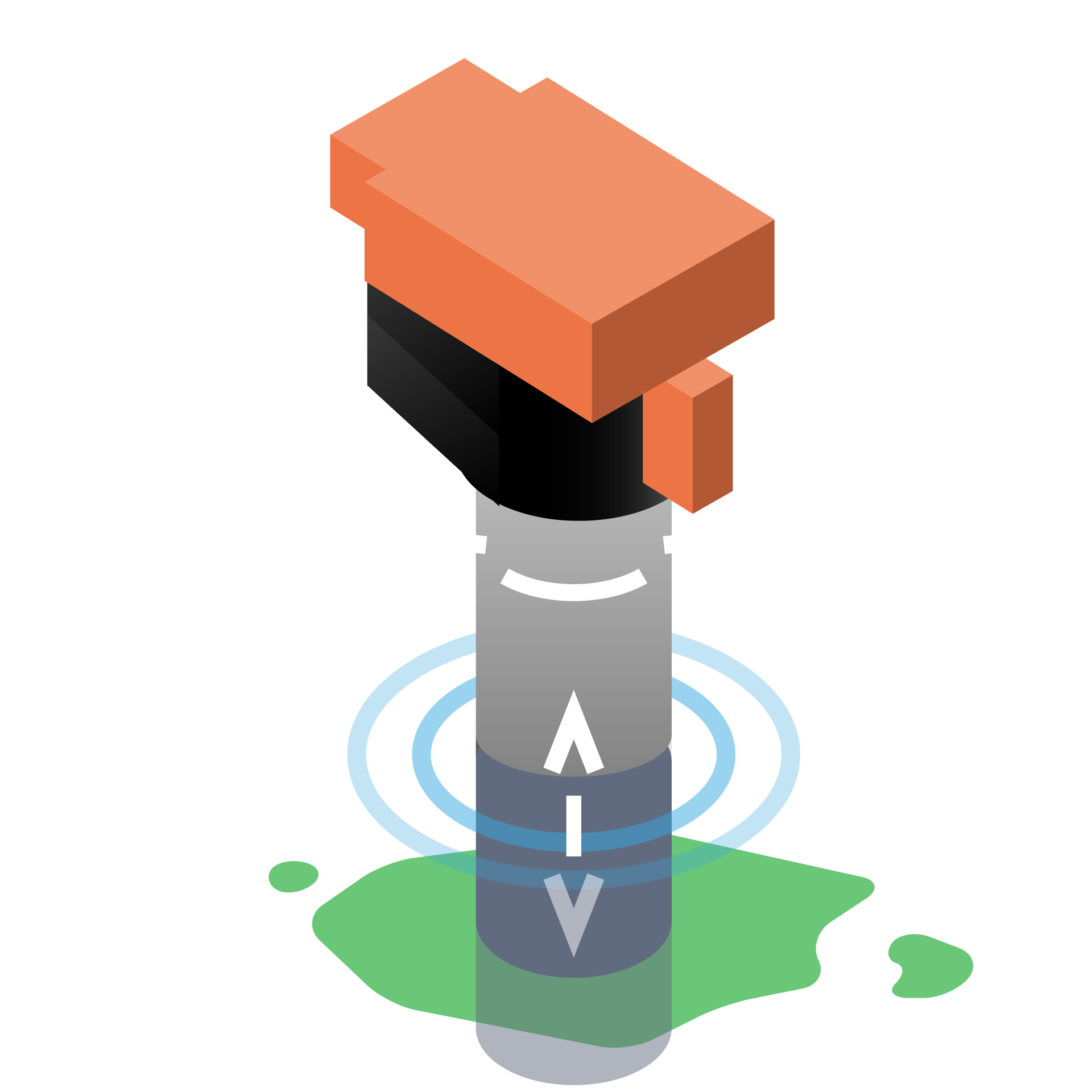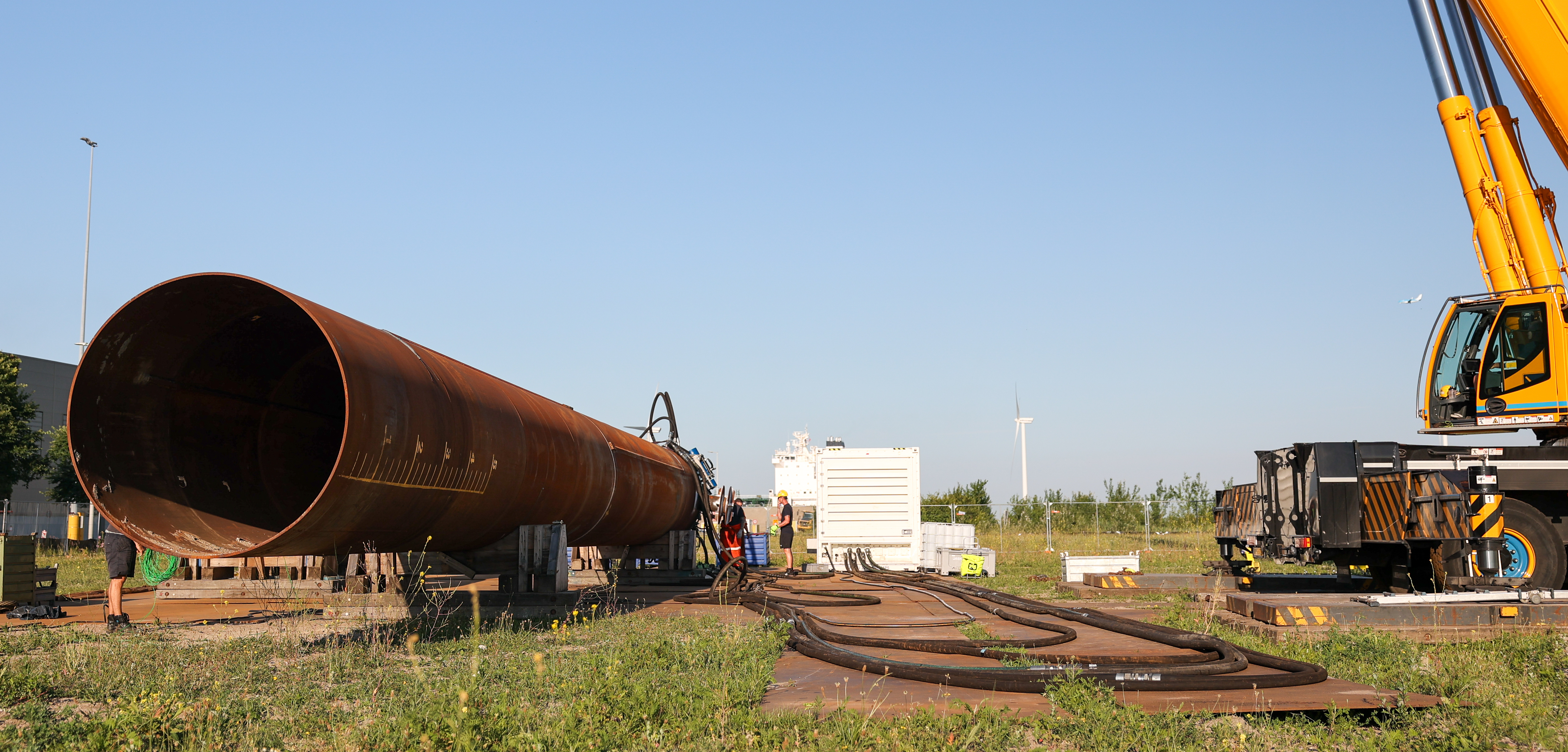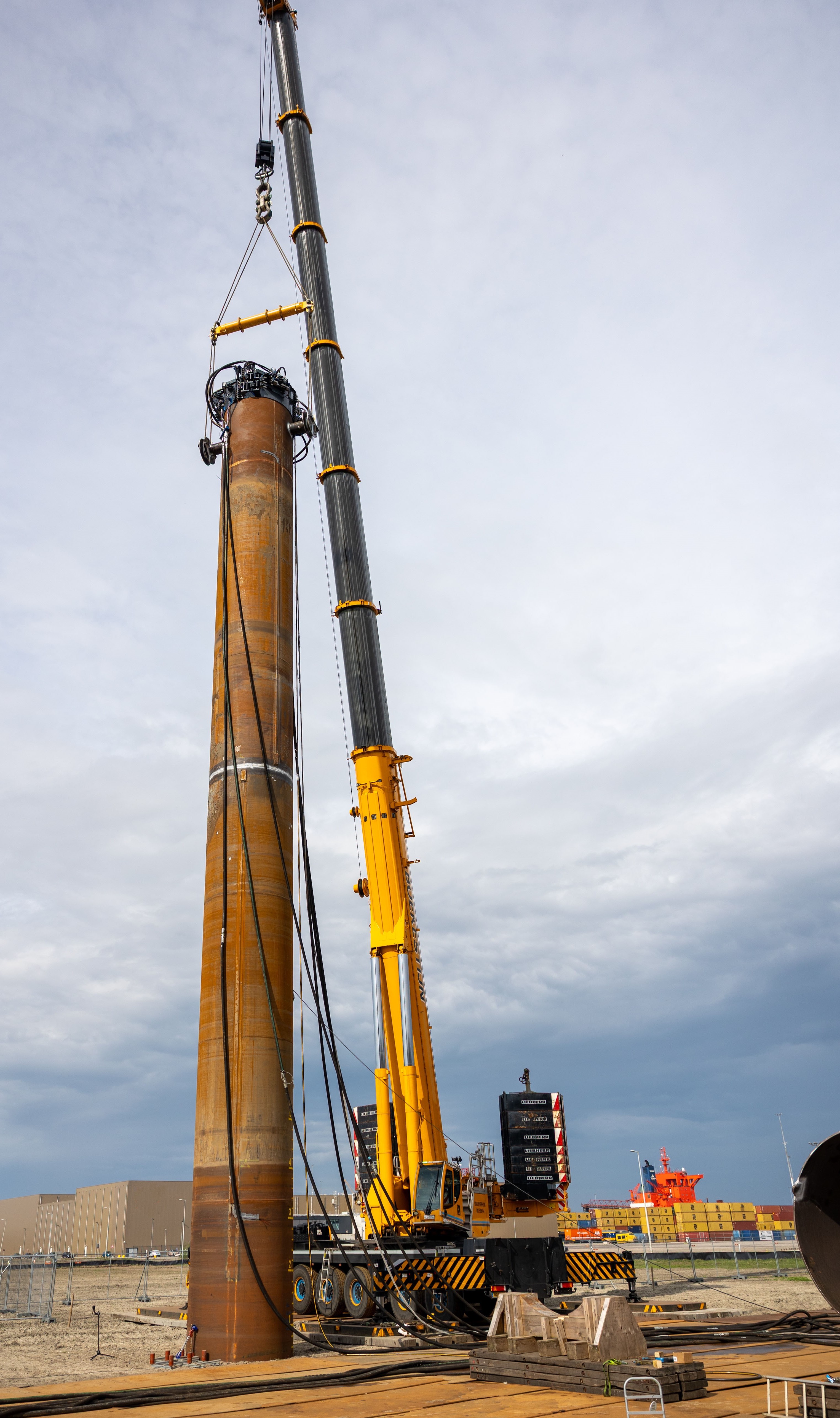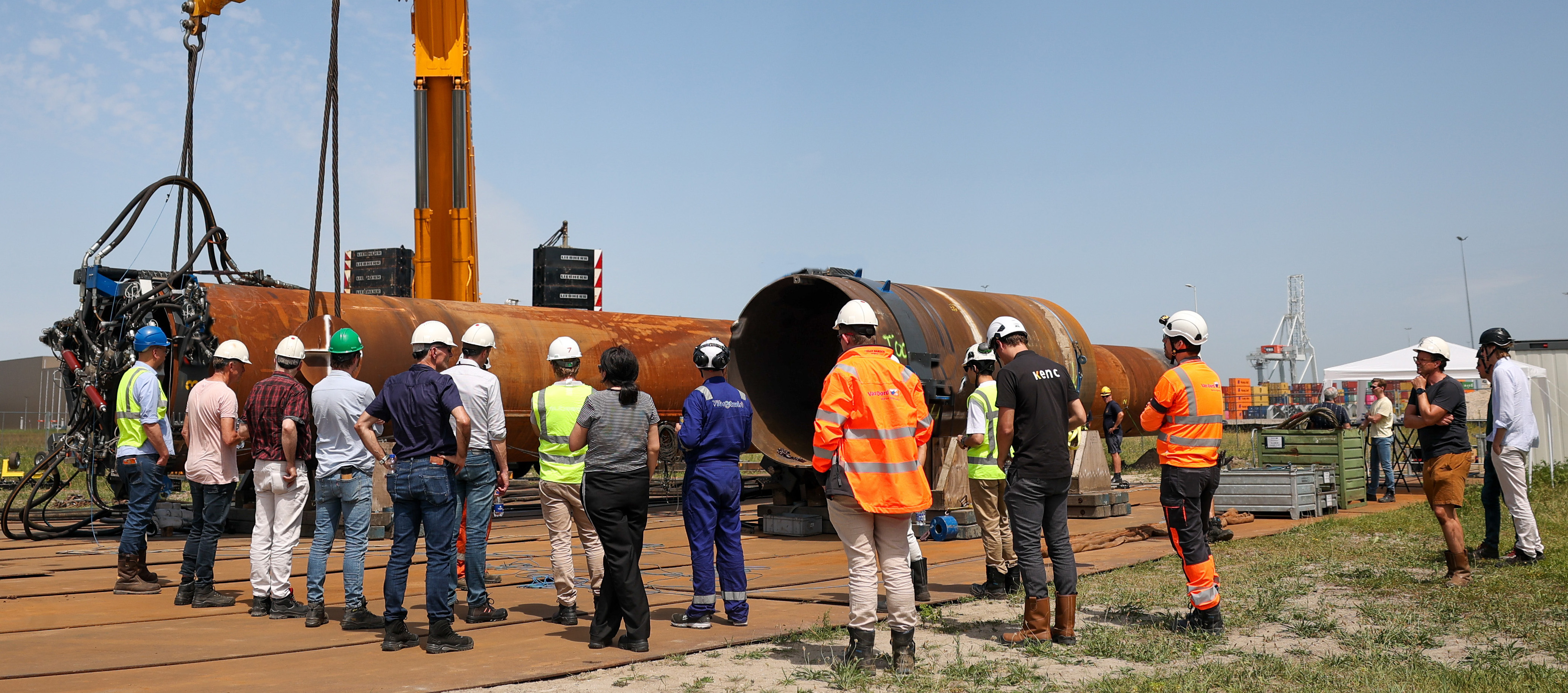Let’s twist again
The GDP 2.0 project has taken a next step in testing its innovative monopile installation method. At the Ruijgoord site – well known from the earlier SIMOX project – the team tested the technology with a 2.2 m diameter, 26 m long monopile. This large-scale field test is crucial on the path to upscaling the technology for offshore applications.
To refresh your memory, Gentle Diving of Piles applies simultaneous low-frequency vertical and high-frequency torsional vibrations as the driving mechanism on the monopile.

Learning from earlier tests
Diederick Nierstrasz from Ampelmann: “This latest test campaign builds on lessons learned from previous indoor- and outdoor trials. Mechanical components have been reinforced to withstand the high accelerations of torsional shaking. Hydraulic power has been increased, valves upgraded, and the control system refined to keep the shaker’s motion in sync with the pile’s behaviour, ensuring maximum driving power.”

 |
|
Measuring every detail

The GDP technology involves vibrations in both vertical and torsional directions, but in this field test only torsional vibrations were applied during several trials. Starting with a penetration depth of 2 m, the ultimate trial reached almost 5 m without any problems, the risk of not retrieving the pile being the limiting factor in this penetration depth. Also, the measured soil disturbance measured with geophones were very promising in delivering on the promise of a significant reduction of installation noise.
 |
|

The tests were performed at the same site as for the tests for other GROW projects: SIMOX and VINEX. And even the monopile has been used during those tests. This demonstrates again the benefits of cooperation between stakeholders in the offshore wind industry and – thanks to the – Port of Amsterdam of easy access to a permitted onshore test location.
The Ruijgoord field test marks another essential step in demonstrating GDP’s potential as a faster, more efficient and scalable installation method for future offshore wind foundations.
Want to know more?
A previous GROW-to-GO edition
about GDP was published in 2022.
Feel free to enjoy the article with lots of photos and
listen to the podcast.
© GROW ’25